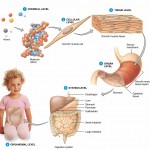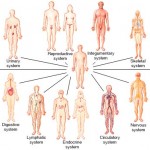The Basics
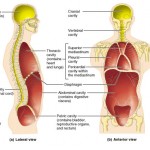
Body cavities and membranes
Body cavities and membranes In most cases, the body is described as having two main cavities called the “dorsal and ventral body cavities”. Some anatomical references do not recognize the dorsal body cavity but we will use it in this example because it’s used by many professionals and colleges. It also makes it easier to […]
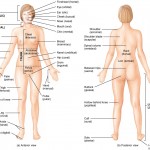
The Language of Anatomy: anatomical position and directional terms
Anatomical position and directional terms The healthcare industry has its own terminology, especially anatomy and physiology. In order to provide exquisite care and understand the inner workings of the human body, anatomical terminology is a necessity. We’ll begin by going over “anatomical position and directional terms”. In order to describe body parts and positions correctly, […]
Cardiovascular System
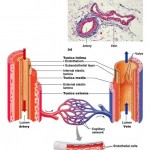
The Cardiovascular System: Blood Vessels
Blood Vessels are often compared to a system of pipes with liquid circulating in them, but this analogy is only a starting point. Unlike pipes, blood vessels are extremely dynamic structures that constrict, relax, pulsate, and proliferate. In this article, we’ll examine the structure and function of these important circulatory pathways. If these pathways get […]
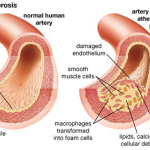
Atherosclerosis
Atherosclerosis When pipes get clogged, its usually because we flushed something down the drain we shouldn’t have. Sometimes, build-up inside of pipes causes clogging. In arteriosclerosis, the walls of the arteries become thick and stiff and hypertension results. In atherosclerosis, which is the most common form of arteriosclerosis, small patchy areas called atheromas form that […]
Tissue
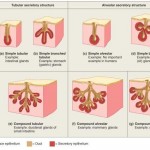
Glandular Epithelium
Glandular Epithelium A gland is one or more cells that produce and secrete a specific product. The product is always a water-based fluid (aqueous) and usually contains proteins (the product is referred to as a secretion). Secretion is considered an active process. Glandular cells obtain substances needed from blood and transform them (chemically) into a […]
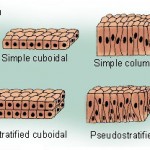
Epithelial Tissue
Epithelium is one of four basic tissue types and covers the entire surface of our body’s. It’s a specialized tissue and lines all internal and external body surfaces. It’s also the only tissue with polarity. In this article we discuss the five main characteristics of epithelium, review slides of each type, discuss size, shape, and location, and final, classify epithelium into different sub-categories for better understanding and organization.
Chemistry

Body Fluids
Body Water Content Factors which determine the overall water weight of a human being include sex, age, mass and body fat percentage. Infants, with their low bone mass and low body fat, are 73% water! Due to the high concentration of water, an infants skin appears “dewy” and soft. Total body water declines after infancy, […]

Chemical Bonds
Chemical Bonds When atoms combine with other atoms they are held together by chemical bonds (bonds formed between electrons of reacting atoms). These electrons occupy regions of space orbiting the nucleus called electron shells. Each electron contains one or more orbitals and each electron shell represents a different energy level (a general understanding of chemical […]
Cells
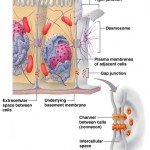
Cell Junctions
Cell Junctions Although certain cell types – blood cells, and some immune system cells – move freely in the body, many others are packed into tight communities. Typically, three factors act to bind cells together. Glycoproteins in the glycocalyx act as an adhesive. Contours in adjacent cells membranes fit together in a tight knit fashion. […]
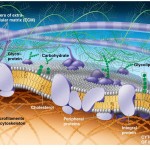
The Plasma Membrane: Structure
Plasma Membrane The flexible plasma membrane defines the barrier of a cell by separating two of the body’s major fluid compartments – the intracellular fluid within cells and the extracellular fluid (ECF) outside cells. The term cell membrane is commonly used as a synonym for plasma membrane, but in this article we will refer to […]
Digestive System
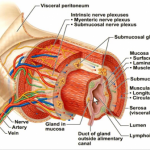
Digestive System: Histology of the Alimentary Canal
The Alimentary Canal In a recent article titled “Digestive System Overview“, we discussed the six processes of digestion. We also discussed the two main divisions of the digestive system, organs within the alimentary canal and accessory digestive organs. In this article, we’ll discuss the structural characteristics of the alimentary canal, which is also known as […]
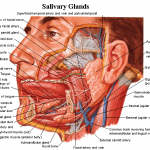
The Salivary Glands
The Salivary Glands Several glands associated with the oral cavity secrete saliva. Saliva: Cleanses the mouth Helps moisten and compact food into a round mass called a bolus Contains enzymes that begin the chemical breakdown of starch Dissolves food chemicals so they can be “tasted” Most saliva is produced by major or extrinsic salivary glands […]
Other Recent Posts

Lever Systems: Bone-Muscle Relationships
How do our bones and muscles work? What makes movement possible? These are just a few questions you may find yourself thinking about now and again, and although these questions cant be answered in a single article, we can tackle the idea of leverage and bone-muscle relationships. In this article we’ll discuss mechanical advantage, mechanical disadvantage, the idea of a lever, fulcrum, effort, and load, classes of levers, and lever systems within the human body.

Muscle Mechanics: Fascicle Arrangement
How do muscles work? Picture a hand-woven quilt full of strong fibers that have different shapes, sizes, and elasticities. The fibers may converge toward a single point, or run parallel with other muscles. Maybe they’re circular (like the muscle fibers around your mouth and eyes), and attach obliquely. In short, the arrangement of a muscle’s fiber bundles (fascicles) determines its range of motion and power. In this article we’ll discuss fiber arrangements and muscle mechanics.
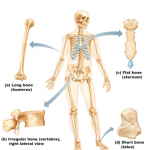
Function and Classification of Bones
The human skeleton contains 206 known bones and because of its sheer scope, a classification system had to be invented. Typically, bones are classified into four categories by shape: long, short, flat, and irregular. The skeleton is again classified into smaller and more specific groups which we’ll discuss in future publications. The seven functions of bone: support, protection, movement, mineral storage, cell formation, fat storage, and hormone production are briefly discussed as well.


